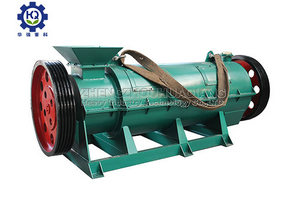In the production process of organic fertilizer production line, a factor that is not well controlled will affect the effect of organic fertilizer. In the field of continuous bulk solids processing equipment, residence time may be one of the most influential variables in process settings, especially in drum fertilizer dryers, rotary When processing materials in kilns, rotary drum granulators or other types of drums.
Residence time is the amount of time a material is processed in a given facility. In most process settings, producers must be able to achieve specific retention times to achieve their desired goals. For example, the need to achieve a specific moisture content, initiate or complete a chemical reaction or phase transition, form particles within a desired particle size distribution, achieve a uniform coating on the particles, etc.
Having the ability to achieve these goals is fundamental to many mineral and chemical processing operations, and proper retention times are critical. This is especially true for drying, pelletizing and high temperature heat treating applications where retention time can mean the difference between product meeting specification and material loss.
For example, in terms of quality, a spin dryer without a proper understanding of the retention time can cause the material to reach the target moisture level prematurely in the drum, meaning the material will continue to dry for the remainder of the time. This can cause the material to overdry and break down into fine powder. Likewise, if the drum is not long enough to accommodate the necessary retention time, the material may exit the drum before reaching the desired moisture content, still not reaching the desired target particle size. In other cases, quality may not be compromised, but the rollers may be oversized, resulting in reduced efficiency and ultimately higher capital costs than necessary.

